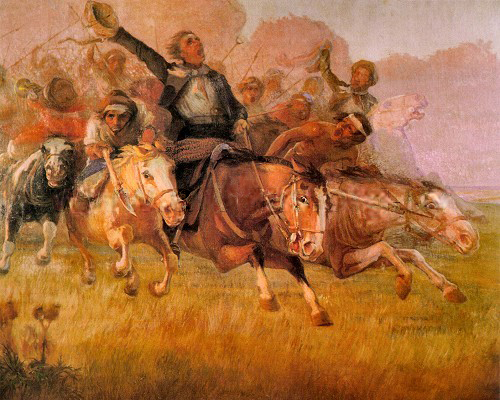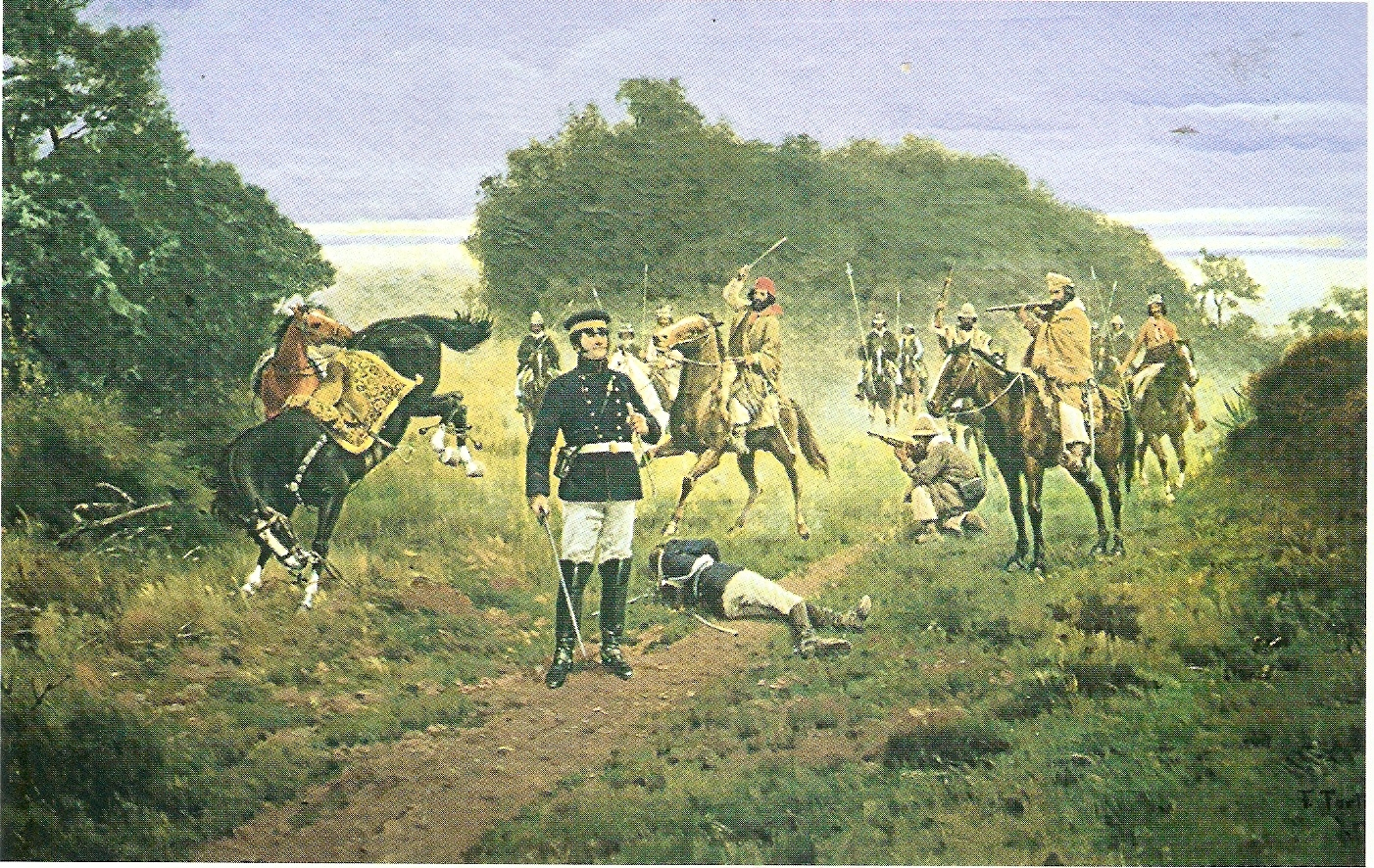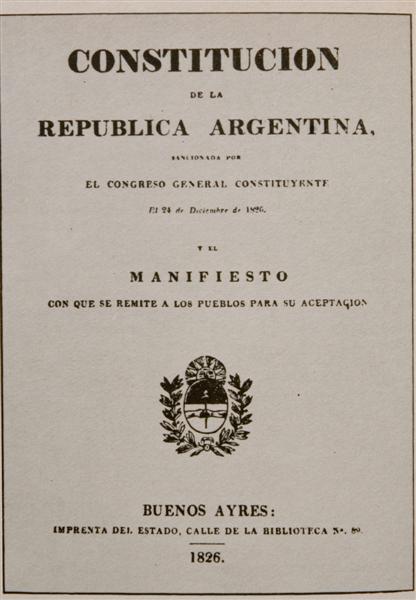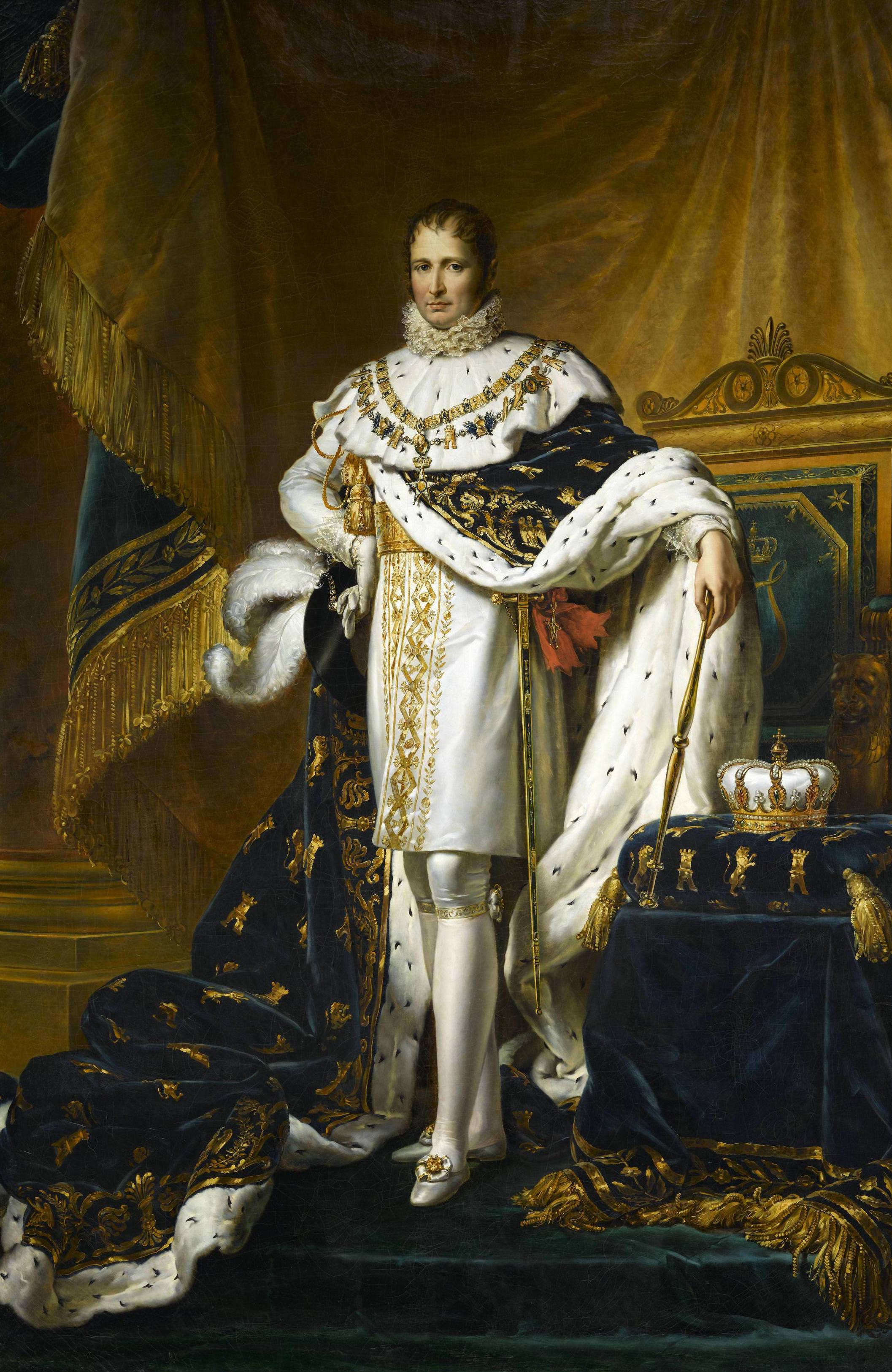|
Federales (Argentina)
The Federalist Party was the nineteenth century Argentine political party that supported federalism. It opposed the Unitarian Party that claimed a centralised government of Buenos Aires Province, with no participation of the other provinces of Argentina, provinces of the custom taxes benefits of the Buenos Aires port. The ''federales'' supported the autonomy of the provincial governments and the distribution of external commerce taxes among the provinces. The federalists advocated a form of political organization that would ensure coexistence between autonomous provinces and a central government with limited powers. They took as a model the federalism of the United States. The view on the most prominent historical leader of the movement is controversial. Juan Manuel de Rosas is considered by his detractors as a "dictator". Among the various possible ways of characterizing him, his supporters call him a "man of order."http://biblioteca.clacso.edu.ar/clacso/otros/20130610085809/A ... [...More Info...] [...Related Items...] OR: [Wikipedia] [Google] [Baidu] |
José Gervasio Artigas
José Gervasio Artigas Arnal (; June 19, 1764 – September 23, 1850) was a soldier and statesman who is regarded as a national hero in Uruguay and the father of Uruguayan nationhood. Born in Montevideo, Artigas enlisted in the Spanish military in 1797 and fought the British in the Anglo-Spanish War (1796–1808), Anglo-Spanish War. At the outbreak of the Spanish American wars of independence, Spanish-American wars of independence, Artigas supported the Primera Junta in Buenos Aires against Spain. He defeated the Spanish royalists at Battle of Las Piedras (1811), Las Piedras and laid siege to Montevideo, but was forced to withdraw in the face of Portuguese invasion of the Banda Oriental (1811–1812), Portuguese intervention. Artigas subsequently broke with the United Provinces of the Río de la Plata, centralist government of Buenos Aires and took over Montevideo in 1815. He then oversaw the creation of the Federal League (1815–1820), Federal League, an alliance of six ... [...More Info...] [...Related Items...] OR: [Wikipedia] [Google] [Baidu] |
Provinces Of Argentina
Argentina has 23 provinces (, singular ) and one autonomous city, Buenos Aires, which serves as the federal capital, as determined by Congress. The provinces and the capital have their own constitutions and exist under a federal system. History During the War of Independence, cities and their surrounding areas became provinces through local councils ( cabildos). This process was finalized during the Anarchy of the Year XX, forming the first 13 provinces. Jujuy seceded from Salta in 1834, and the thirteen provinces became fourteen. After seceding for a decade, Buenos Aires Province accepted the 1853 Constitution of Argentina in 1861, and its capital city was made a federal territory in 1880. A law from 1862 designated as national territories those territories under federal control but outside the frontiers of the provinces. In 1884 they served as bases for the establishment of the governorates of Misiones, Formosa, Chaco, La Pampa, Neuquén, Río Negro, Chubut, ... [...More Info...] [...Related Items...] OR: [Wikipedia] [Google] [Baidu] |
José María Paz
Brigadier General José María Paz y Haedo (September 9, 1791 – October 22, 1854) was an Argentine military figure, notable in the Argentine War of Independence and the Argentine Civil Wars. Childhood Born in Córdoba, Argentina, the son of '' criollos'' José Paz and María Tiburcia Haedo, Paz y Haedo studied philosophy and theology at the ''Seminario de Loreto'' intern school, then at the Universidad de Córdoba, receiving his Bachelor of Arts degree with orientation in mathematics, Latin and law. After the May Revolution he joined the army that would fight the Royalists forces and allow the independence of Argentina. His brother, Julián Paz Haedo, born in 1793, was also an officer in the revolutionary army. Battles for the War of Independence José Paz was sent to Upper Peru in 1811, and participated in the 1812 victories of the Army of the North, under General Manuel Belgrano. As assistant to Baron von Holmberg (Belgrano's secretary), he was awarded with the "Def ... [...More Info...] [...Related Items...] OR: [Wikipedia] [Google] [Baidu] |
Unitarian League
The Unitarian League () also referred to as the League of the Interior () was a league of provinces of Argentina led by José María Paz, established in 1830, aiming to unite the country under Unitarian Party, unitarian principles. It comprised the provinces of San Luis Province, San Luis, La Rioja Province, Argentina, La Rioja, Catamarca Province, Catamarca, Mendoza Province, Mendoza, San Juan Province, Argentina, San Juan, Tucumán Province, Tucumán, Córdoba Province, Argentina, Córdoba, Salta Province, Salta and Santiago del Estero Province, Santiago del Estero. It was opposed and ultimately defeated by the provinces of the Pacto Federal, Federal Pact. Formation After the Cisplatine War, Argentine-Brazilian war, which brought the independence of the Banda Oriental, Banda Oriental del Uruguay, the political situation in the provinces was greatly affected by the disappearance of Bernardino Rivadavia, Rivadavia's Unitarian national government. Due to this the provinces procl ... [...More Info...] [...Related Items...] OR: [Wikipedia] [Google] [Baidu] |
Argentine Constitution Of 1826
The Argentine Constitution of 1826 was a short-lived Constitution of Argentina drafted during the Argentine Civil Wars. Bernardino Rivadavia was appointed President of Argentina under this constitution. It was rejected by most Argentine provinces, and then abolished. Context The Argentine War of Independence, which began in 1810, was soon followed by the Argentine Civil Wars, as the provinces had conflictive views over the national organization. The federals supported the autonomy of the provinces, and the Unitarian party supported a political centralization of the country in Buenos Aires. The Argentine Constitution of 1819, drafted by the Congress of Tucumán, was highly centralist. It was abolished in 1820 after the federal victory at the battle of Cepeda. The office of the Supreme Director of the United Provinces of the Río de la Plata, the head of state at the time, was abolished as well. The provinces stayed united as a country by the Treaty of Pilar, but without any con ... [...More Info...] [...Related Items...] OR: [Wikipedia] [Google] [Baidu] |
Bernardino Rivadavia
Bernardino de la Trinidad González Rivadavia (May 20, 1780 – September 2, 1845) was the first President of Argentina, then called the United Provinces of the Río de la Plata, from February 8, 1826 to June 27, 1827. He was educated at the Colegio Nacional de Buenos Aires, Royal College of San Carlos, but left without finishing his studies. During the British invasions of the River Plate, British Invasions he served as Third Lieutenant of the Galicia Volunteers. He participated in the Cabildo abierto del 22 de mayo de 1810, open Cabildo on May 22, 1810 voting for the deposition of the viceroy. He had a strong influence on the First Triumvirate (Argentina), First Triumvirate and shortly after he served as Minister of Government and Foreign Affairs of the Province of Buenos Aires. Although there was a General Congress intended to draft a constitution, the beginning of the Cisplatine War, War with Brazil led to the immediate establishment of the office of President of Argenti ... [...More Info...] [...Related Items...] OR: [Wikipedia] [Google] [Baidu] |
Battle Of Cepeda (1820)
The Battle of Cepeda of 1820 took place on February 1 in Cañada de Cepeda, Buenos Aires Province, Argentina. The conflict was the first major battle that saw Unitarians and Federals as two constituted sides. It ended with the defeat of the national government. Federal League Provinces of Santa Fe, Entre Ríos and José Miguel Carrera joined forces to topple the 1819 ''centralist'' Constitution and the Directorial government of the United Provinces of the Río de la Plata. Both provincial leaders, Estanislao López and Francisco Ramírez, were allies of José Gervasio Artigas. Supreme Director José Rondeau called back the Armies that were fighting the Argentine War of Independence to fight the Federals. The Army of the Andes, commanded by José de San Martín refused to abandon the offensive against the royalists in Chile and Peru. The Army of the North, commanded by Manuel Belgrano, mutinied at Arequito, as the troops and the officiality refused to fight a civil wa ... [...More Info...] [...Related Items...] OR: [Wikipedia] [Google] [Baidu] |
May Revolution
The May Revolution () was a week-long series of events that took place from 18 to 25 May 1810, in Buenos Aires, capital of the Viceroyalty of the Río de la Plata. This Spanish colony included roughly the territories of present-day Argentina, Bolivia, Paraguay, Uruguay, and parts of Brazil. The result was the removal of Viceroy#Spanish Empire, Viceroy Baltasar Hidalgo de Cisneros and the establishment of a local government, the Primera Junta (''First Junta''), on 25 May. The May Revolution was a direct reaction to Peninsular War, Napoleon's invasion of Spain. In 1808, King Ferdinand VII of Spain Abdications of Bayonne, abdicated in favour of Napoleon, who granted the throne to his brother, Joseph Bonaparte. A Supreme Central and Governing Junta of the Kingdom (Spain), Supreme Central Junta led resistance to Joseph's government and the French occupation of Spain, but eventually suffered Peninsular War#Corunna campaign, 1808–1809, a series of reversals that resulted in th ... [...More Info...] [...Related Items...] OR: [Wikipedia] [Google] [Baidu] |
Napoleonic Wars
{{Infobox military conflict , conflict = Napoleonic Wars , partof = the French Revolutionary and Napoleonic Wars , image = Napoleonic Wars (revision).jpg , caption = Left to right, top to bottom:Battles of Battle of Austerlitz, Austerlitz, Fall of Berlin (1806), Berlin, Battle of Friedland, Friedland, Battle of Aspern-Essling, Aspern-Essling, French occupation of Moscow, Moscow, Battle of Leipzig, Leipzig and Battle of Paris (1814), Paris , date = {{start and end dates, 1803, 5, 18, 1815, 11, 20, df=yes({{Age in years, months, weeks and days, month1=05, day1=18, year1=1803, month2=11, day2=20, year2=1815) , place = Atlantic Ocean, Caucasus, Europe, French Guiana, Mediterranean Sea, North Sea, West Indies, Ottoman Egypt, Egypt, East Indies. , result = Coalition victory , combatant1 = Coalition forces of the Napoleonic Wars, Coalition forces:{{flagcountry, United Kingdom of Great Britain and ... [...More Info...] [...Related Items...] OR: [Wikipedia] [Google] [Baidu] |
Americas
The Americas, sometimes collectively called America, are a landmass comprising the totality of North America and South America.''Webster's New World College Dictionary'', 2010 by Wiley Publishing, Inc., Cleveland, Ohio. When viewed as a single continent, the Americas or America is the 2nd largest continent by area after Asia, and is the 3rd largest continent by population. The Americas make up most of the land in Earth's Western Hemisphere and comprise the New World. Along with their Lists of islands of the Americas, associated islands, the Americas cover 8% of Earth's total surface area and 28.4% of its land area. The topography is dominated by the American Cordillera, a long chain of mountains that runs the length of the west coast. The flatter eastern side of the Americas is dominated by large river basins, such as the Amazon basin, Amazon, St. Lawrence River–Great Lakes, Mississippi River System, Mississippi, and Río de la Plata Basin, La Plata basins. Since the Americ ... [...More Info...] [...Related Items...] OR: [Wikipedia] [Google] [Baidu] |
Spain
Spain, or the Kingdom of Spain, is a country in Southern Europe, Southern and Western Europe with territories in North Africa. Featuring the Punta de Tarifa, southernmost point of continental Europe, it is the largest country in Southern Europe and the fourth-most populous European Union member state. Spanning across the majority of the Iberian Peninsula, its territory also includes the Canary Islands, in the Eastern Atlantic Ocean, the Balearic Islands, in the Western Mediterranean Sea, and the Autonomous communities of Spain#Autonomous cities, autonomous cities of Ceuta and Melilla, in mainland Africa. Peninsular Spain is bordered to the north by France, Andorra, and the Bay of Biscay; to the east and south by the Mediterranean Sea and Gibraltar; and to the west by Portugal and the Atlantic Ocean. Spain's capital and List of largest cities in Spain, largest city is Madrid, and other major List of metropolitan areas in Spain, urban areas include Barcelona, Valencia, Seville, ... [...More Info...] [...Related Items...] OR: [Wikipedia] [Google] [Baidu] |
United Provinces Of The Río De La Plata
The United Provinces of the Río de la Plata (), earlier known as the United Provinces of South America (), was a name adopted in 1816 by the Congress of Tucumán for the region of South America that declared independence in 1816, with the Sovereign Congress taking place in 1813, during the Argentine War of Independence (1810–1818) that began with the May Revolution in 1810. It originally comprised rebellious territories of the former Spanish Viceroyalty of the Río de la Plata dependencies and had Buenos Aires as its capital. The name ''"Provincias del Río de la Plata"'' (formally adopted during the Cortes of Cádiz to designate the Viceroyalty of the Río de la Plata) alludes to the ''Junta Provisional Gubernativa de las Provincias del Río de la Plata'' or Primera Junta. It is best known in Argentinean literature as ' ("United Provinces of the River Plate" i.e. ''river of silver''), this being the most common name (since 1811) in use for the country until the enact ... [...More Info...] [...Related Items...] OR: [Wikipedia] [Google] [Baidu] |







